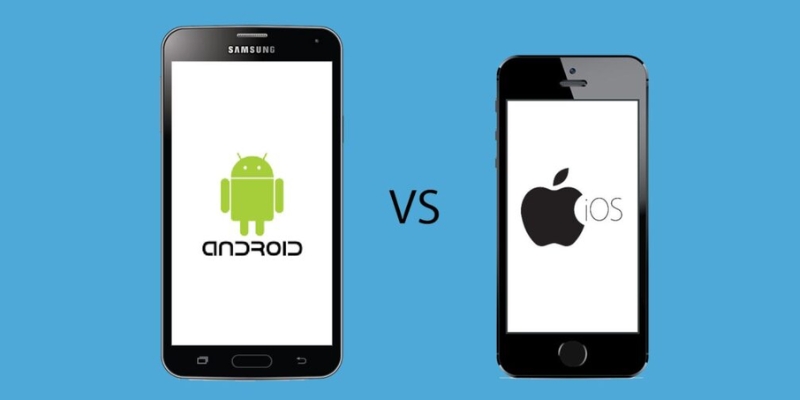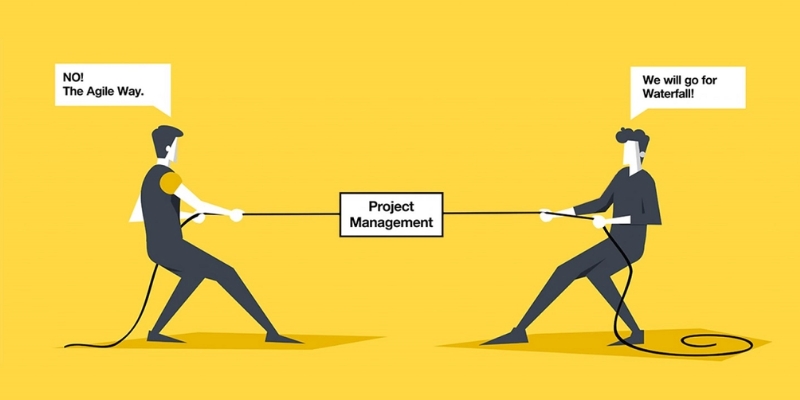Lucia Lee
Last update: 01/04/2025
So, you’ve got a great mobile app idea and are ready to bring it to life, but there's this question holding you back: How much will it cost? The answer isn’t straightforward, as multiple factors come into play, from app complexity to platform choice and post-launch maintenance. In this post, we’ll break down 10 key factors affecting mobile app development cost, helping you plan your budget effectively and make informed decisions.
The development approach you choose to build your app significantly impacts its price tag. There are two primary options: native and cross-platform development.
Native apps are built specifically for iOS or Android using platform-specific languages. This brings about various benefits, including superior performance, seamless integration with device features, and an optimized user experience. However, since each platform requires a separate codebase, development costs are inevitably higher.
Cross-platform apps, on the other hand, use frameworks like Flutter or React Native to run on multiple platforms with a single codebase. This approach reduces costs and development time, making it ideal for businesses looking to reach a wider audience at a lower budget.
While cross-platform apps save time and money, they may not match native apps in performance or fully leverage platform-specific features. Therefore, the right choice depends on your priority - whether development cost or app performance matters more to you.
Also read: How To Develop A Mobile App: The Ultimate Guide
Let’s assume that you’ve chosen the native development approach. Here comes another one among the key factors affecting mobile app development cost: the platform you choose - Android vs. iOS.
Developing an Android app generally incurs higher costs due to the platform's wide range of devices with varying screen sizes and hardware specifications. This diversity requires extensive testing and optimization to ensure smooth performance across different models, leading to longer development times and increased expenses. Additionally, Android offers a broader set of API integrations, which, while providing flexibility, can also complicate development.
On the other hand, iOS apps are typically faster and less costly to develop because Apple’s ecosystem is more uniform. With a limited number of devices, testing and optimization become more straightforward. Moreover, iOS users tend to spend more on apps, making monetization easier. Maintenance costs are also lower since Apple provides regular, streamlined updates that ensure better app stability over time.
Beyond cost considerations, understanding your target audience is crucial. If your app aims to reach a global market with a wider user base, investing in Android may be beneficial despite higher development costs. However, if monetization is a priority and your target audience consists of high-spending users, iOS might be the better choice. Ultimately, selecting the right platform requires balancing cost, market reach, and business objectives.

Platform selection
The complexity of your app ranks first among the key factors affecting mobile app development cost. The more sophisticated and feature-rich an app is, the higher its price tag due to the time, expertise, and resources required.
Basic apps focus on core functionality, offering minimal screens, simple UI elements, and limited backend processing. These apps are cheapest to develop, with costs ranging between $10,000 and $50,000.
Mid-range apps, on the other hand, introduce additional features like user authentication, data synchronization, push notifications, and third-party integrations. With a more advanced backend system needed to handle data and user interactions, these apps demand more time and effort to develop and test. Their development costs can vary from $50,000 to $100,000.
Highly complex apps, costing above from $100,000, come with cutting-edge functionalities such as real-time synchronization, AI-driven recommendations, interactive UI animations, and geolocation services. These advanced features require deep backend infrastructure, heightened security measures, and multiple API integrations, significantly driving up costs.
Another one among the key factors affecting mobile app development cost is UI/UX (user interface and user experience) design, which directly affects user engagement and satisfaction. A well-designed interface not only enhances usability but also strengthens brand identity, making it a worthwhile investment.
A basic UI/UX relies on standardized, platform-specific components, making it faster and more affordable to develop. While this approach ensures consistency and ease of use, it may lack uniqueness.
On the other hand, custom UI/UX includes advanced illustrations, animations, and tailored user interactions, offering a more engaging experience but requiring more time and skilled expertise, thus significantly increasing costs. Investing in high-quality UI/UX design can cost anywhere from $5,000 for a simple interface to $50,000 for a highly customized experience.
Wireframes and animations also impact pricing. Simple wireframes allow for quick prototyping, reducing costs, whereas detailed wireframes with extensive design iterations are more expensive. Similarly, basic animations enhance interactivity at a lower cost, while complex animations, crucial for social, ecommerce, and gaming apps, require a longer design phase and specialized skills, making them significantly more expensive.

UI/UX design
When talking about key factors affecting mobile app development cost, we can’t forget to mention third-party integration. It plays a crucial role in enhancing an app’s functionality but also adds to its development costs.
Many apps, such as the high-converting ecommerce platform BetteMax, require external services like payment gateways, social media logins, push notifications, and analytics tools to provide a seamless user experience. However, each integration demands additional development time, testing, and potential licensing or subscription fees.
For instance, integrating Google or Facebook login features can add $1,000 to $4,000 to development costs. Similarly, payment gateways like Stripe or PayPal charge transaction fees ranging from 2.5% to 3.5%. While these integrations save development time compared to building features from scratch, you should carefully assess their necessity and long-term costs. Proper planning ensures that essential third-party services enhance user experience without inflating the budget unnecessarily.
The choice of technologies and infrastructure is also one of the key factors affecting mobile app development cost. For example, while JavaScript frameworks like React and Angular are more cost-effective and speed up development, high-performance applications often require MEAN or MERN, which come with higher costs due to the need for specialized expertise and longer development times. Additionally, opting for premium tools or frameworks with licensing fees, such as Microsoft Azure or AWS, can significantly increase the budget.
Besides the foundational technology stack, incorporating advanced technologies such as artificial intelligence (AI), machine learning (ML), blockchain, and augmented reality (AR/VR) can further drive up expenses. Features like AI-powered recommendation engines, chatbots, or blockchain-based security enhancements enhance user experience but require specialized skills and extended development time.
Beyond the technologies used, infrastructure and cloud services are also major cost factors. Many mobile apps rely on cloud platforms like AWS, Google Cloud, or Azure, which charge based on usage. Small apps with basic API calls and minimal storage needs incur lower costs, while medium-sized apps with real-time messaging and moderate data storage see higher expenses. As an app scales to accommodate more users and higher data loads, the associated backend expenses also increase.

Technologies and infrastructure
App security is a crucial component of mobile app development, particularly for applications handling sensitive data. Though security measures may significantly increase initial development costs, they are a necessary investment in ensuring long-term user trust and app reliability.
Implementing robust security features not only ensures compliance with regulations like GDPR, HIPAA, and CCPA but also protects user data and safeguards the business from potential legal consequences. Basic security measures, such as SSL certificates and authentication tools, are relatively affordable, but enhanced security features like encryption protocols, secure data storage, and two-factor authentication add to the overall cost.
For apps that collect personal or financial data, compliance with legal requirements is mandatory, necessitating security consultations, compliance testing, and ongoing audits. The cost of security implementation can range from a few thousand dollars for basic encryption to tens of thousands for comprehensive security frameworks and regular compliance testing. These expenses should be factored into the overall app budget, as failing to meet security standards can lead to data breaches, reputational damage, and financial penalties.
The development team is one of the key factors affecting mobile app development cost you shouldn’t overlook. The cost varies based on the type of team, their location, and their level of expertise.
The type of development team significantly affects pricing. Hiring an in-house team provides direct control and seamless communication but comes with high salaries, benefits, and office expenses. Some businesses think of agencies that offer full-service solutions, but this tends to be expensive. A more budget-friendly option is outsourcing to offshore or nearshore teams where development rates are typically lower. Freelancers are also a cost-effective option for small projects or minimum viable products (MVPs), but they require careful management and may not be suitable for large-scale applications.
Location plays a crucial role in determining development rates. Onshore teams in regions like the US or Western Europe charge premium rates, often ranging from $100 to $250 per hour. In contrast, offshore teams in Southeast Asian countries like Vietnam offer significantly lower rates while not compromising on quality. Nearshore teams, located in neighboring countries, provide a middle ground between affordability and collaboration efficiency.
The expertise of the development team also impacts costs. Highly skilled developers, UI/UX designers, and project managers demand higher fees but deliver high-quality work efficiently, reducing the need for revisions and maintenance. While hiring less experienced developers may seem cost-effective initially, it can lead to longer development times and increased expenses due to bug fixes and additional revisions. Therefore, you must carefully balance cost and expertise to ensure a smooth development process.

Development team
Launching a mobile app doesn’t mean you don’t have to worry about costs anymore. Ongoing maintenance and updates are crucial to ensure its smooth operation, security, and user satisfaction, but they don’t come free. The cost of post-launch maintenance is typically 15-20% of the initial development budget.
For instance, an app that costs $100,000 to build may require an annual maintenance budget of $15,000 to $20,000. Beyond basic upkeep, adding new features and improvements is essential for maintaining user interest and staying competitive in the market. These enhancements may be charged on a project basis, making it beneficial to plan for future updates during the initial development phase. Factoring in long-term maintenance from the outset helps ensure the app’s longevity, performance, and overall success.
You may find it interesting (or not) that the project management approach you choose is also one of the key factors affecting mobile app development cost. Agile, Waterfall, and DevOps are three common methodologies, each with its advantages and trade-offs.
Agile is a flexible and iterative approach that breaks the development process into smaller, manageable tasks. With methodologies like Scrum or Kanban, Agile allows teams to adapt to changes quickly, integrate feedback, and catch issues early. This method often results in faster development cycles and a product that aligns more closely with market demands. Additionally, Agile can help optimize costs by minimizing rework and allowing for adjustments along the way.
In contrast, the Waterfall approach follows a sequential process, where each stage - planning, design, development, testing, and deployment - is completed before moving to the next. While this method provides structure and clear milestones, it lacks flexibility. If changes are needed late in the development cycle, they can lead to delays and additional costs.
DevOps offers a middle ground by integrating development and operations teams, ensuring continuous testing, automation, and faster deployment. This approach can enhance efficiency and reduce downtime, making it a suitable option for businesses requiring frequent updates and a streamlined development process.
Selecting the right project management approach depends on the app’s complexity, budget constraints, and team dynamics. A well-planned methodology ensures smoother execution, fewer setbacks, and a cost-effective development process.

Project management approach
Understanding the key factors affecting mobile app development cost helps you plan wisely and avoid unexpected expenses. From app complexity to development approach, every decision impacts your budget. By carefully evaluating your needs and prioritizing essential features, you can build a high-quality app without overspending.
At Sky Solution, we specialize in budget-friendly mobile app development by using an agile approach and focusing on your specific requirements. This allows us to eliminate unnecessary costs while delivering a scalable, high-performing app that meets your business goals. Ready to bring your app idea to life? Contact us now and let’s build something great together!
FAQs:
1. How much does it cost to develop a mobile app?
The cost of developing a mobile app varies widely, depending on factors like app complexity, platform (iOS, Android, or both), design requirements, and development team location.
To get an accurate estimate, it’s best to define your requirements and consult with a development team.
2. How long does it take to develop a mobile app?
The development timeline depends on factors like the app’s complexity, feature set, project management approach, and testing requirements. A basic app with minimal features may take 2-4 months, while a moderate app with integrations and custom UI could take 4-6 months. For complex apps with AI, real-time data processing, or extensive backend systems, development could take 9 months or more.
3. Should I hire app developers locally or outsource?
Both options have pros and cons. Hiring locally offers better collaboration, time zone alignment, and cultural familiarity, but it tends to be more expensive. Outsourcing to experienced teams in regions like Southeast Asia can be more cost-effective while still delivering high-quality results. The best choice depends on your budget, project complexity, and the level of control you want over the development process.
4. What is the most cost-effective way to develop a mobile app?
To keep costs down while maintaining quality, consider: